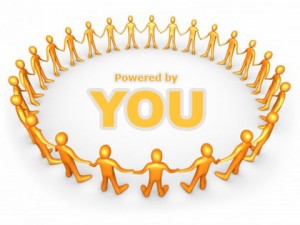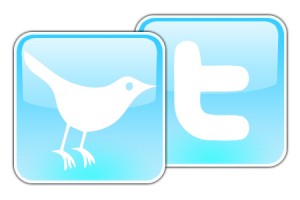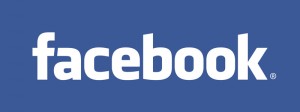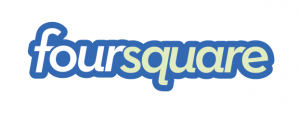 A few years back, my long-time friend, collaborator and sometimes client Rob Key of award-winning social media consultancy Converseon outlined how companies ideally should endeavor to engage the social graph.
A few years back, my long-time friend, collaborator and sometimes client Rob Key of award-winning social media consultancy Converseon outlined how companies ideally should endeavor to engage the social graph.
He called the process “cultural anthropology,” and by so doing, recognized that each social channel or community had distinct customs and a language of its own. (At the time, the objects of clients’ affections were a burgeoning Facebook, MySpace, Wikipedia, Second Life, and some niche online communities.)
Rob warned that companies must first take time to gain a clear understanding of these nets’ disparate languages and customs before attempting to make their presence known. At the time, many “forward-thinking” marketers blindly jumped into the social fray, hoping to exert or exact influence, and instead ended up paying a price in sullied reputation.
I’ve since heard others echo Rob’s mantra using that now clichéd party metaphor, i.e., don’t walk up to a group in deep conversation at a cocktail party and just start blathering away.
Today, the advice to individually engage each social channel also rings true for those building their personal brand identities (and spheres of influence). I ask:
- How many online communities are you active in?
- Are your “friends” the same from channel to channel?
- How do you determine whom to friend or unfriend from community to community?
- Do you intra-link your comments, tweets and posts between your social nets?
User protocols vary from person to person. Personally, I can’t figure out the rationale for following tens of thousands of people on Twitter, or why one would give perfect strangers access to your real-time whereabouts on FourSquare.
Anyway, I thought I’d take some time to outline the approach I make to the social channels in which I have an active presence. Please know that they are not by any stretch a model for everyone. They just happen to work for me…for now:
- Followers: I welcome and encourage anyone to follow me, except for SPAM artists, Twitter-baiters who extol the secret sauce for building followers, and dubious 3rd party app promoters requesting both my Twitter name AND password.
- Following: I am very judicious about whom I follow. They tend to be authoritative voices in the media, marketing, technology, and PR space. Those who post pics showing what’s on their dinner plates or describe their daily exercise regimen almost always get “the unfollow.”
- Contrary to how most Facebookers use this channel, I limit my FB friends to business associates and thought-leaders, also in the media, marketing, PR, and technology space.
- As a result, I’ve been put on the spot by my brothers, sister, and many forgotten high school and college friends and acquaintances. Fortunately, my three sons proceeded to block me after I signed up, which saved me even more agida.
- This is probably the most inclusive of my social networks. I have more than 500 friends who run the gamut from industry thought leaders to current and past clients to former colleagues at the agencies I’ve worked over a long career in PR.
- As a rule, I have not accepted LinkedIn invitations from people I don’t know or know about. I also refrain from linking in with PR industry service vendors or headhunters, both of which stand to gain more from mining my network than I do from tapping theirs.
- I’m finding more and more digerati whom I know or know of, have joined this location-based social network(ing game). Who doesn’t love the surprise of earning a new badge or moniker when periodically checking-in?
- However, the CEO of a major fashion house told me over the holidays that he finds it creepy to share one’s whereabouts with a bunch of randoids. He’s right. Hence, I have thus far resisted invitations to connect on FourSquare with people I really don’t know (and trust).
- I apply the same rules of familiarity to Dopplr, which tracks and promotes my travel plans by city versus FourSquare’s local venue approach.
- What’s TimesPeople? It’s a growing network of New York Times readers who follow each others’ story recommendations from NYTimes.com. It allows users to keep tabs on the most recommended, commented and tweeted stories.
- Like Twitter, I welcome anyone to follow my story recommendations, but try to follow those whose opinions I respect. I may not know them personally, as is the case with some Times staffers, but I’m always curious to learn what they deem worth reading.
- I joined Friendfeed after Scobleizer began touting its magical powers of connection. Since that time, however, my use of the channel for posting original content has waned.
- My Friendfeed today, with 342 followers, captures and streams my editorial output from several sources including my blog, Twitter feed and Facebook page.
In addition to those mentioned above, I use Ping.fm (now owned by Seesmic) to aggregate these disparate social networks (not unlike Friedfeed), del.icio.us for bookmarking, bit.ly as a URL shortening/bookmarking tool, and am now experimenting with Gist, Google Wave, and Brizzly.
The reasons why I’ve embraced the social graph would merit a whole other post, but suffice to say that these (and others on the horizon) are the channels that eventually will serve as vital links to your client’s core constituencies (and your own ability to exert influence). Those in the PR biz should take the time to learn how to navigate them.






